The 12v system on our Airstream had been through several iterations – from fairly original when we bought it, so new lights, 12v outlets, solar and fuse panel on the island.
For this next iteration, the batteries, fuse panel and solar regulator all needed relocating for the more open interior we had in mind.
The solar regulator was relocated to the new bathroom cabinet. The flexible roof panels we’d installed on the island were still in good working order. We pulled down the centre ceiling panel to run the cabling inside and back to the bathroom. Wiring then ran from there, around the back of the bathroom to two new Lithium 100W batteries, alongside the wheel well.
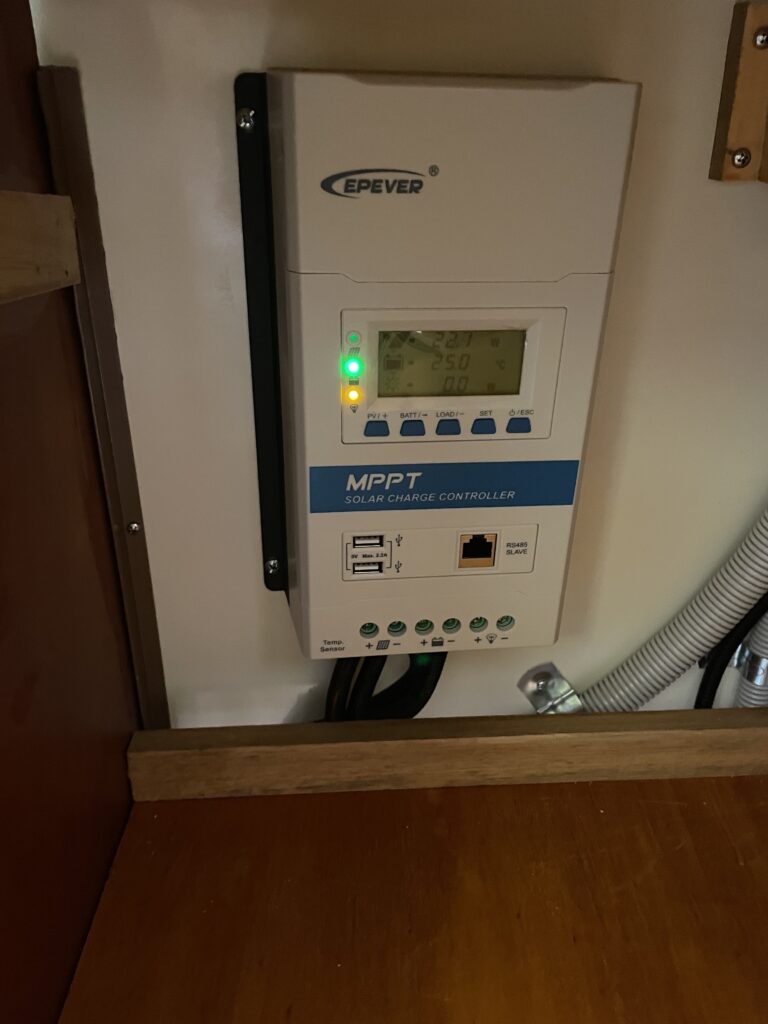
The 12v fuse panel was relocated inside the top cupboard above the bathtub – close to where the original 12 volt wiring exited the wall cavity.
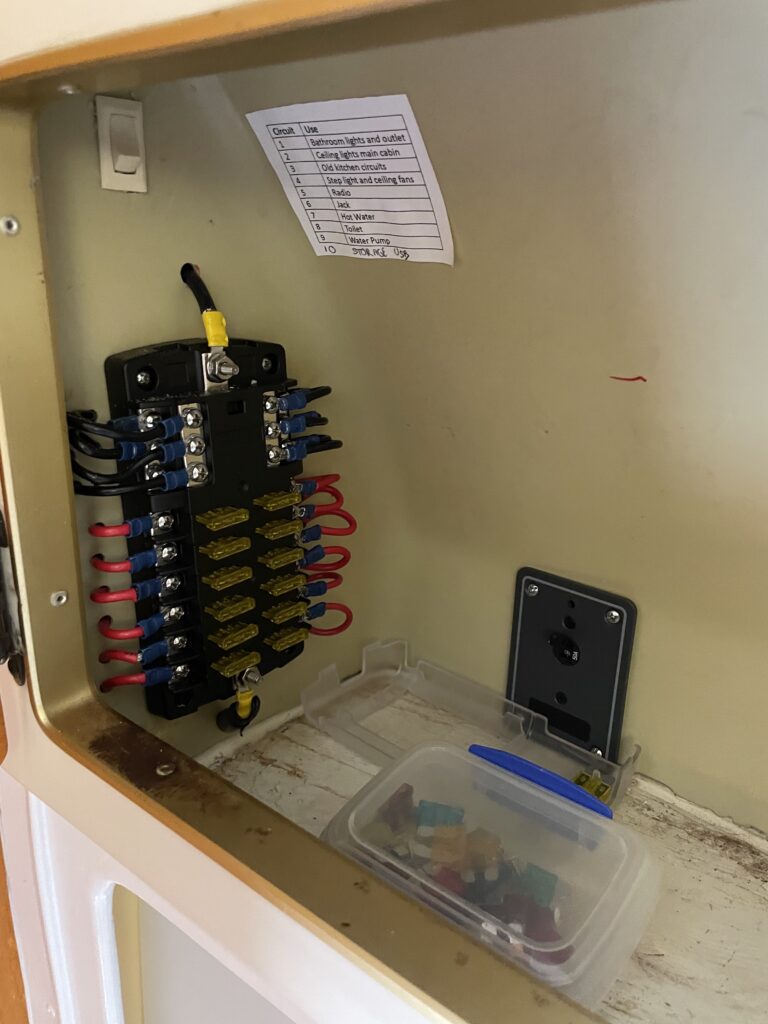
Two Sirocco fans were added – one near the bed, and one at the front of the Airstream where we planned to set up a folding desk for remote working. We had already replaced the original airconditioning with a Fan-tastic fan vent – which combined with the big windows gave us all the cooling we would need.
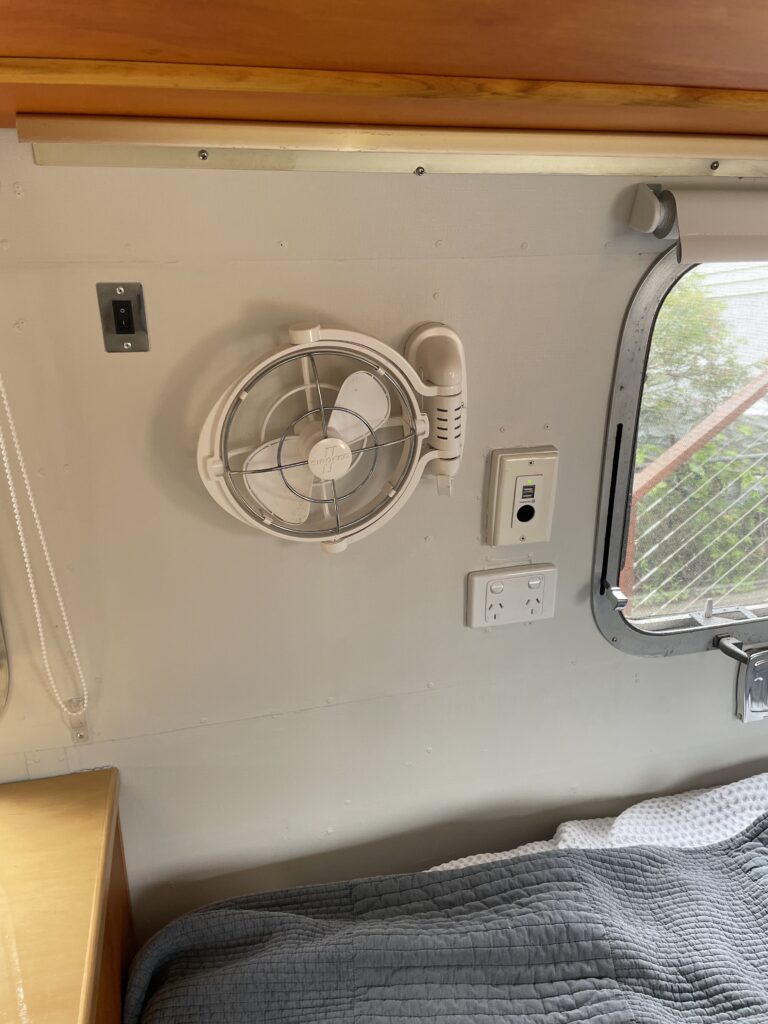
We replaced the radio aerial with a new replica, pairing that with a new car stereo and replaced the wiring and old speakers with two 100W Hogtunes speakers we had left over from our Harley-Davidson days. The radio has a remote power switch to turn it off and save draining the battery.
The original television aerial was replaced with a mobile broadband aerial, attached to the original mount – so we could wind it up and down – and the cabling was fished through the ceiling to the front locker, where it and a new USB port connects to a mobile broadband hotspot. It works brilliantly to bring high speed broadband into the trailer for working and streaming.
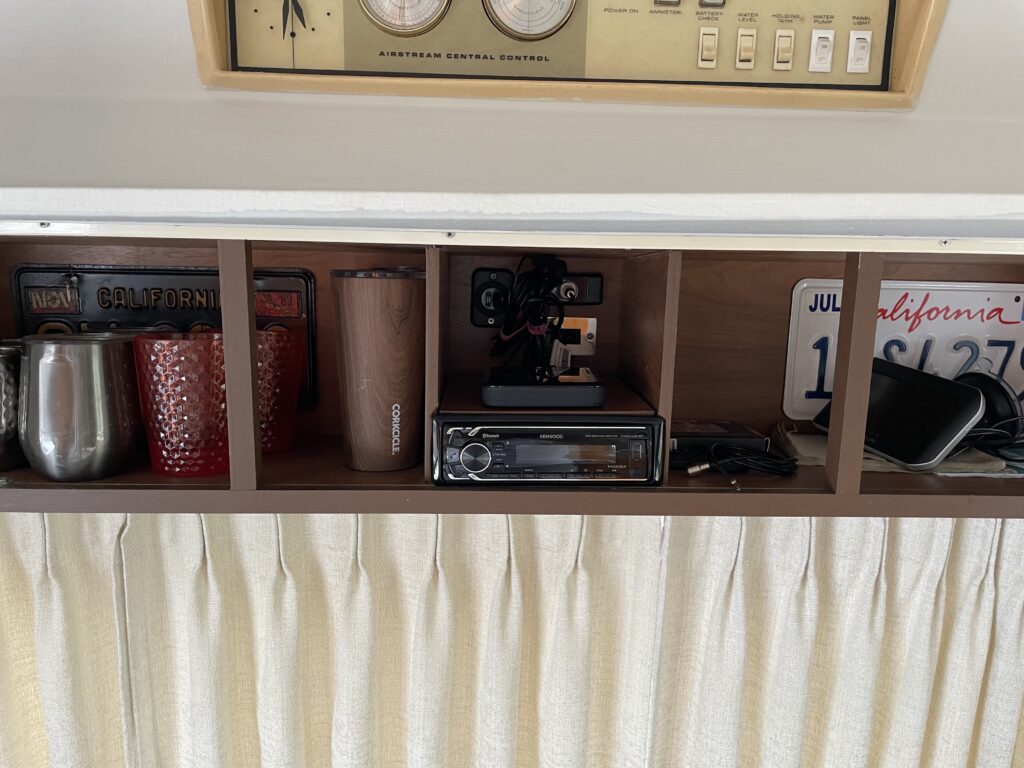
We added two wireless magnetic iPhone wall chargers near the bed, and a 12V USB waterproof outlet on the outside of the van, hidden inside the original mains power outlet.
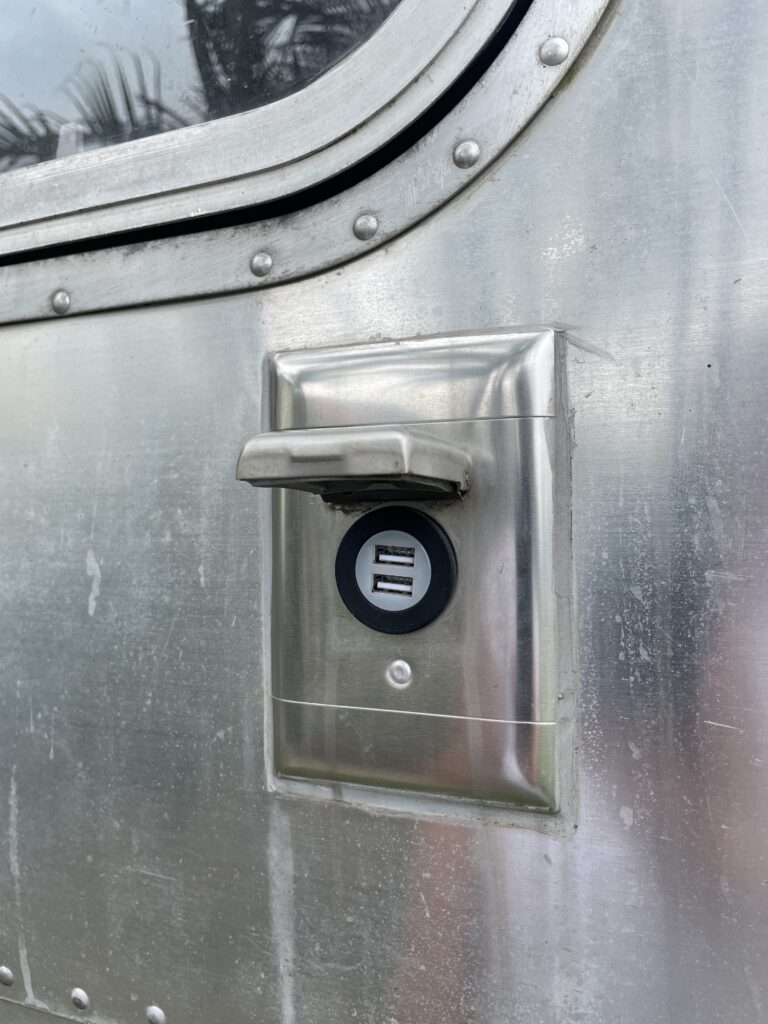
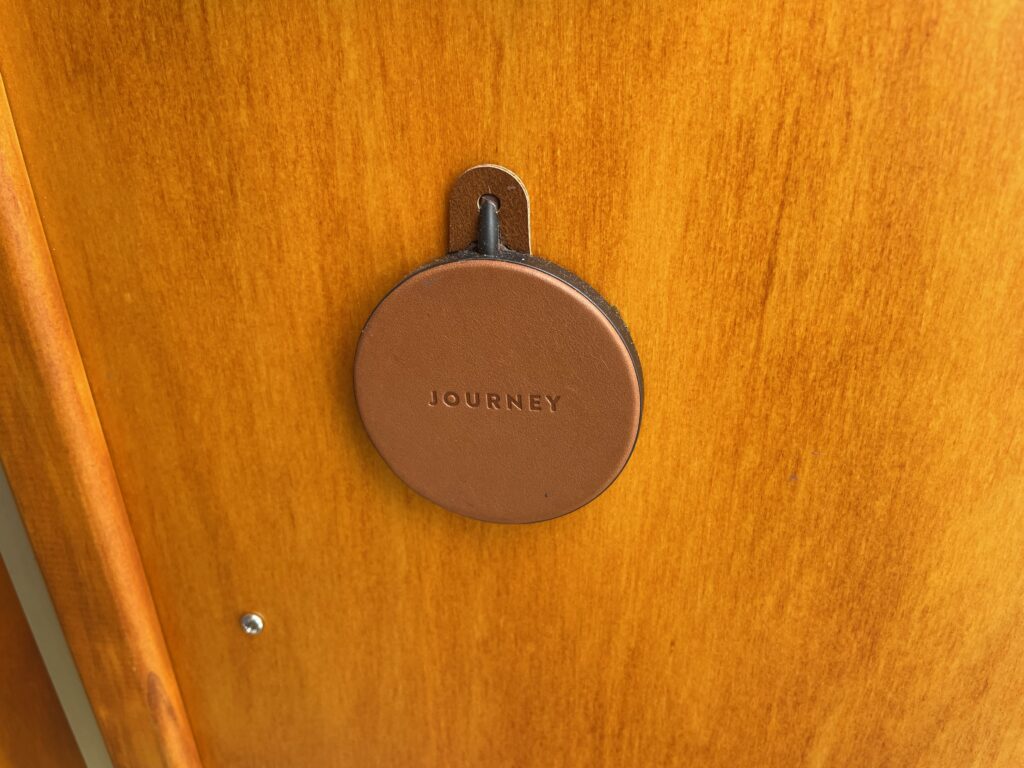
Finally, we wired in an inverter next to the batteries that can be accessed through the kitchen cabinet when needed.
Our 240v power needs are relatively modest – we don’t have an airconditioner, so we just needed wiring for the fridge and some outlets in the kitchen, and the water heater. Our local electrictian installed the circuit breaker panel and wiring.
Most of the 240v wiring was run externally in conduit for future access, knowing it would all be hidden behind cabinetry. We had removed the lower internal panelling to replace the floor, so where possible, the wiring to power points was run internally to those spots through conduit.
A new power inlet and a 240 power outlet were installed as well.